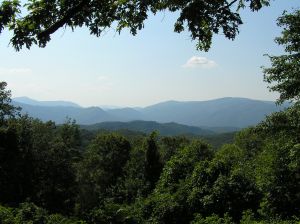National Park Spotlight: Great Smoky Mountains National Park
Good day!
Today’s AllCampgrounds blog will introduce our new National Park Spotlight feature as we move into the Great Smoky Mountains.
Around here, we think it’s pretty great that some of the most majestic natural features in the U.S. are on protected land for everyone to enjoy, so we’d like to highlight some of the best national parks.
And where better to begin than the state we’ve been touring lately, Tennessee?
Naturally, Great Smoky Mountains National Park offers some of the best camping opportunities in the foothills of this picturesque range. Though it’s not the oldest national park around, its unique blend of an incredible array of animal life, breathtaking hiking opportunities, and welcoming mountain culture has come together to make it the most visited national park in the United States.
The inception of Smoky Mountains as a public park dates back to 1926. Though it was declared by Congress in that year, there was no federally owned land in the area that could serve as the “seed” of the park. The beauty of the Smoky Mountains summoned up a lot of financial support in a very short time, including a sizeable contribution by legendary industrialist John D. Rockefeller. In the 1930s, the land was developed by the Civilian Conservation Corps, and by the mid-1970s, the park was attracting international recognition. It was declared a UNESCO World Heritage Site in 1983.
All About Smoky Mountains Camp Grounds and Activities
With about 500 miles of trails appropriate for visitors from beginner to advanced, Great Smoky is a paradise for hikers, inviting you to experience closeness with the local wildlife on dozens of backcountry and developed trails. There are ten separate locations filled with developed camp grounds, all of which include restrooms: but sorry, RV fans, there are no electrical or water hookups to be found anywhere in the park. Frontcountry camp grounds can be reserved from May 15th to October 31st. See the Frontcountry Camping Fee Schedule and park maps for more information.
Many of the most challenging and rewarding trails in the park traverse the backcountry, and might require at least an overnight stay in “primitive” camp grounds and shelters. The Backcountry Camping Map comes in handy here, and also marks off the locations of all official trails. Backcountry permits are free, but some sites require advance reservation. Also be aware that, though you can have an amazing time in the backcountry, there are some specific restrictions: no tent camping, no pets, and fairly strict regulations on the amount of time you can spend at individual shelters or sites.
A Reminder to Be Bear-Aware
An earlier post discussed bear safety, but this is particularly important around the Smoky Mountains since its entire extent, pretty much, is black bear country. In short, it’s never appropriate to assume you’re completely “in the clear” with bears in this area. That means everyone needs to take precautions and know just what a bear is all about. Though they can’t see very well, the American Black Bear has some surprising talents: they can swim and climb trees, and even at a hefty 500 lbs, they run about 30 miles per hour at full tilt. Check out the previous post on bears, and consult with the local ranger station for the latest warnings before you venture out for the day.


